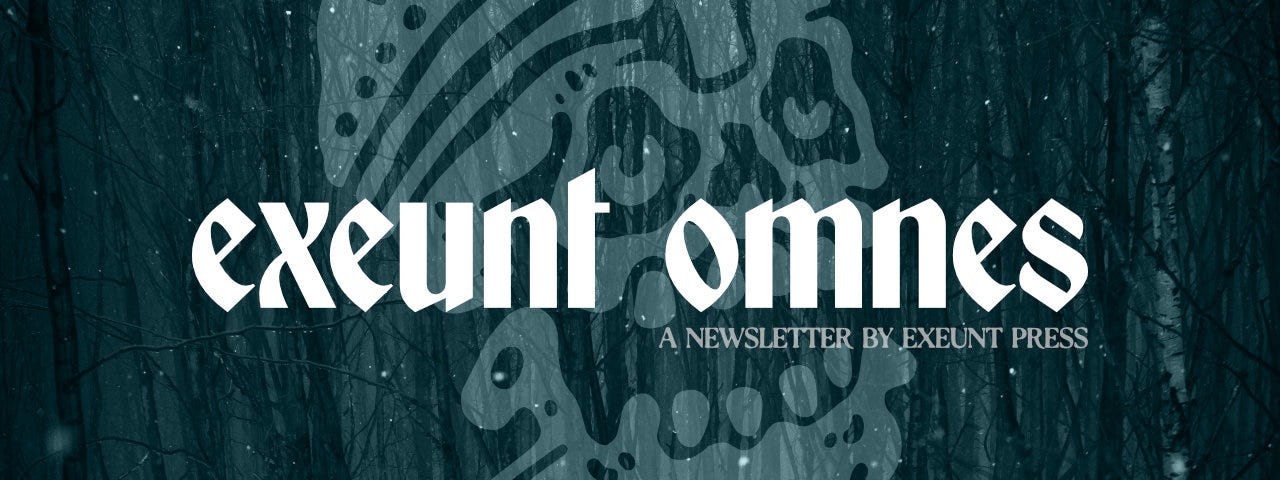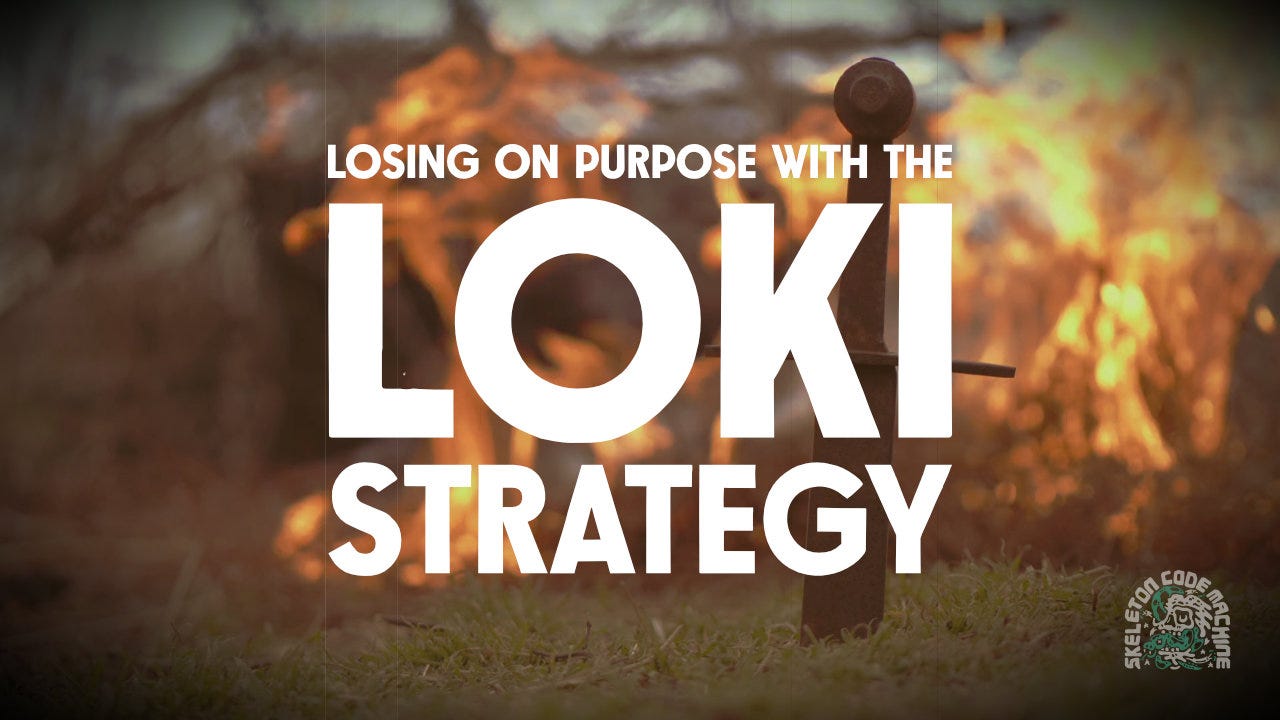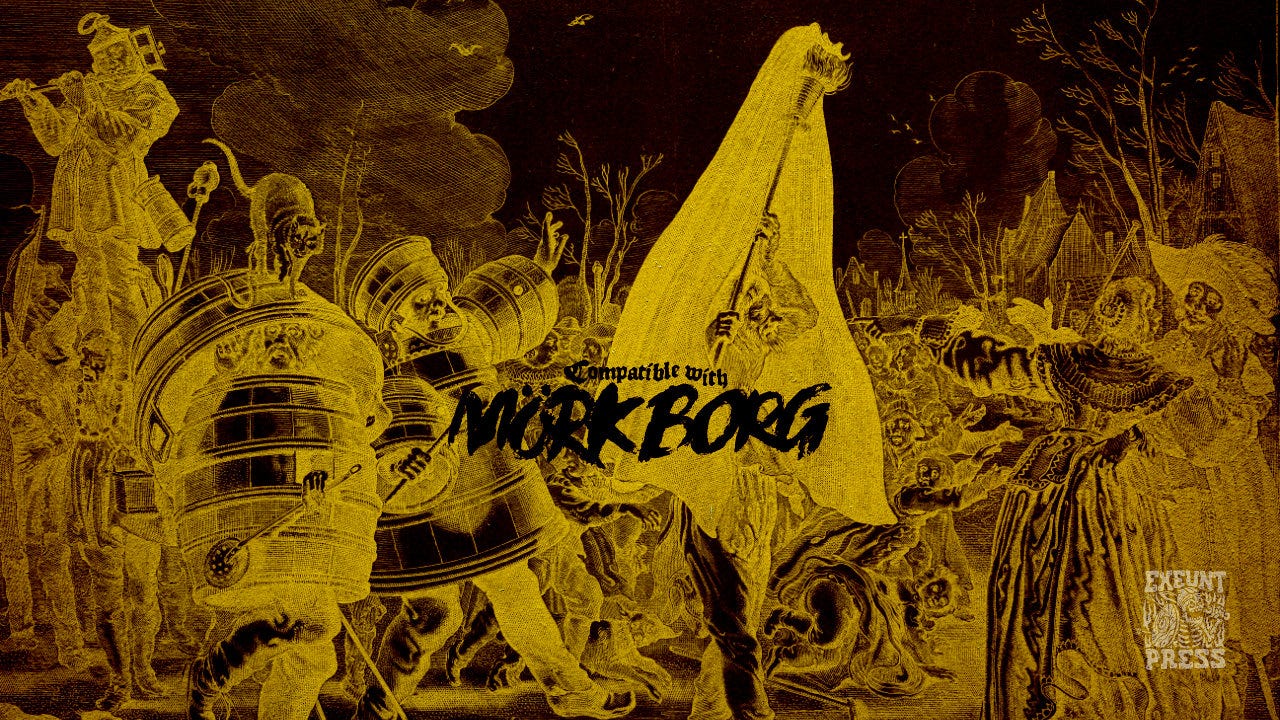What makes a MÖRK BORG module good?
Chthonic Metro Gods, losing on purpose, MÖRK BORG modules, and Kemet
TL;DR Summary
🚇 Chthonic Metro Gods modular cards released
🔥 Losing on purpose with the Loki strategy
⚔️ What makes a MÖRK BORG module good?
🎲 Recently played: Kemet: Blood & Sand
🚇 Chthonic Metro Gods
Chthonic Metro Gods is a set of modular, MOSAIC Strict cards for use in any roleplaying game system.
The bridge-sized PDF currently includes three (3) cards including:
Symbols: Gather the symbols of the sleeping gods' power.
Portents: Watch the skies and determine when the time is right.
Rituals: Perform the rituals in order to feel their embrace.
The double-sided, 2.25" x 3.5" cards can be used separately or together. There are no rules that require all three. An alternate, high-contrast (no background) version is included for improved readability.
I’m really happy with the Chthonic Metro Gods trailer, and I hope you watch it.
Expect more cards added to the Chthonic Metro Gods deck in the near future!
🔥 Losing on purpose with the Loki strategy
You might have noticed a combat theme in recent Skeleton Code Machine posts. I continue to think about how modify TTRPG combat in interesting ways. There are many ways to do this including zero luck combat, random turn order, but also changing the player’s motivation.
Two weeks ago we looked at Losing on purpose with the Loki strategy in Blood Rage by Eric Lang. The game turns the “I must win combat!” idea on it’s head, where the real motivation is to gain Glory (i.e. victory points). This may mean you want to lose all your battles!
Read it at Skeleton Code Machine.
⚔️ What makes a MÖRK BORG module good?
Saw an interesting thread on Reddit asking what people look for in a good MÖRK BORG module. Having made a few modules, I was curious what everyone had to say!
Here are some of the things that stood out to me from the thread:
Not just combat: People want traps, obstacles, puzzles, even just locked doors. Anything other than walking through and killing everything.
Dark thematic elements: There is an expectation that a MÖRK BORG adventure isn’t a happy one. Rot, filth, death, disease, forbidden knowledge, recommended.
Ability to drop into an existing campaign: Adventure hooks, rumors, and reasons to be in the area can all help here. It’s nice to help out the GM, and give them a way to tie this into their current adventures.
More than just a dungeon map: While dungeon maps are great, it’s nice to have a random exploration part of the adventure. This can be a hex map, procedurally generated network (e.g. tunnels), or other ways to explore.
Tough choices: This one is one of my personal favorites, although I’ll admit it’s hard to do well. I love tough choices in both TTRPGs and board games, especially ones with Faustian bargain or Needful Things elements to them. You get the good thing, but it comes with some really bad stuff too. Just be careful for when your players learn there’s a price for everything.
Rotblack Sludge is a good model: The official adventure module at the back of the MÖRK BORG rulebook is a good place to start. Rotblack Sludge has a simple map with mini-maps on each page, multiple ways through the dungeon, alternatives to combat, traps, and an interesting boss.
Multiple factions with different motivations: Another one that can be tricky to implement, but can really make a module shine. Having just one group sitting in a dungeon for adventurer’s to come by can be fun, but navigating rival factions can really elevate the adventure. There’s a small example of this in Rotblack Sludge.
Graphic design and layout: While not required, it’s hard to say good design and layout don’t matter. This may be easier to accomplish with MÖRK BORG because of it’s association with using public domain art.
Short descriptions are sometimes preferred: The expectation seems to be that MÖRK BORG adventures have short, meaningful descriptions that are unique and interesting. Rather than a page of lore about routine monsters, a short description of a truly horrifying abomination might go a long way.
The above are all opinions, of course, but I think they can be useful to consider when designing a new adventure module. Most of them apply not only to MÖRK BORG, but also to many other roleplaying game systems. In fact, I’d argue that some (many?) of them apply to tabletop board games as well!
Interested in making some things for MÖRK BORG? Consider participating in #MÖRKTOBER this year! Prompts will be posted Friday, September 1, 2023 so you have some time to prep!
Need some MÖRK BORG adventures? Check out this MÖRK BORG bundle!
🎲 Recently played: Kemet: Blood & Sand
Played Kemet: Blood & Sand again, but this time with some new players.
I think there are obvious comparisons to be made between this game and Ankh: Gods of Egypt, and I think Ankh would be my favorite of the two. Kemet does, however, remain a game I enjoy playing.
The ability to teleport around the map starting battles is fun, and I like that there’s really no way to win by just hiding out in a corner of the map. You have to engage the other players if you want to have a chance at victory.
The point system is particularly interesting, having a mix of both permanent victory points (“Fame Points” or “FP” in the game) and temporary ones based on area control mechanisms. With only nine points required for overall victory, each battle has the chance to swing the entire game. Some players might dislike that, but I enjoy it for what it is.
Thanks for subscribing to Exeunt Omnes!
Check out exeuntpress.itch.io for all the latest games and resources!
- E.P. 💀







Good one.
I liked the insight on module design, some great pointers here.